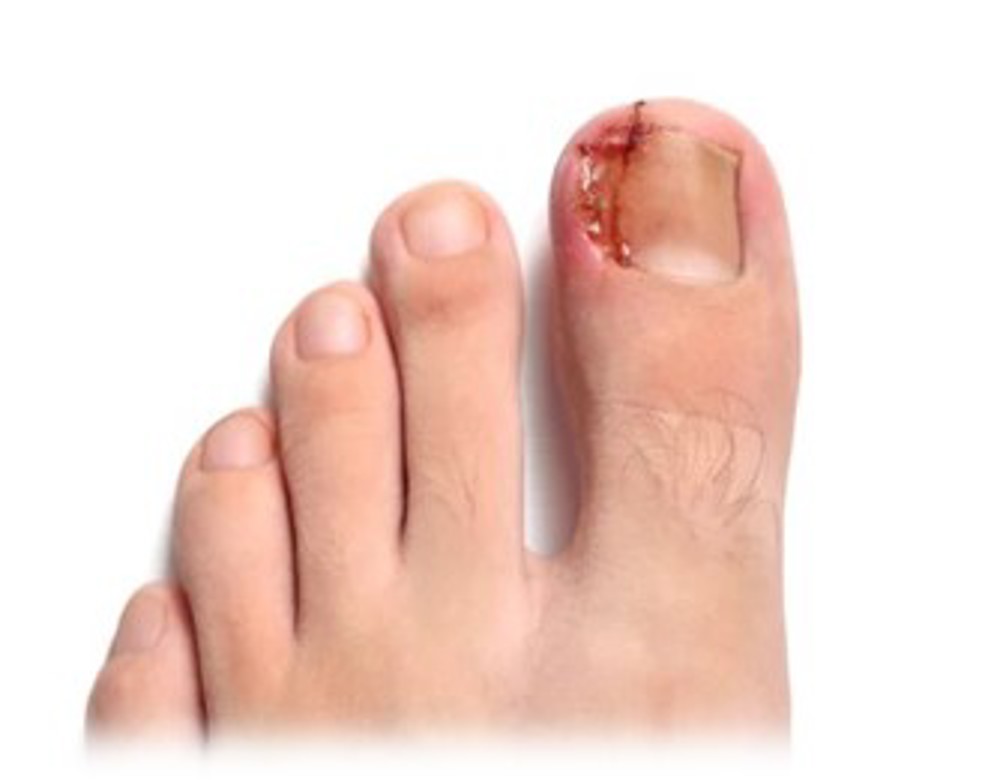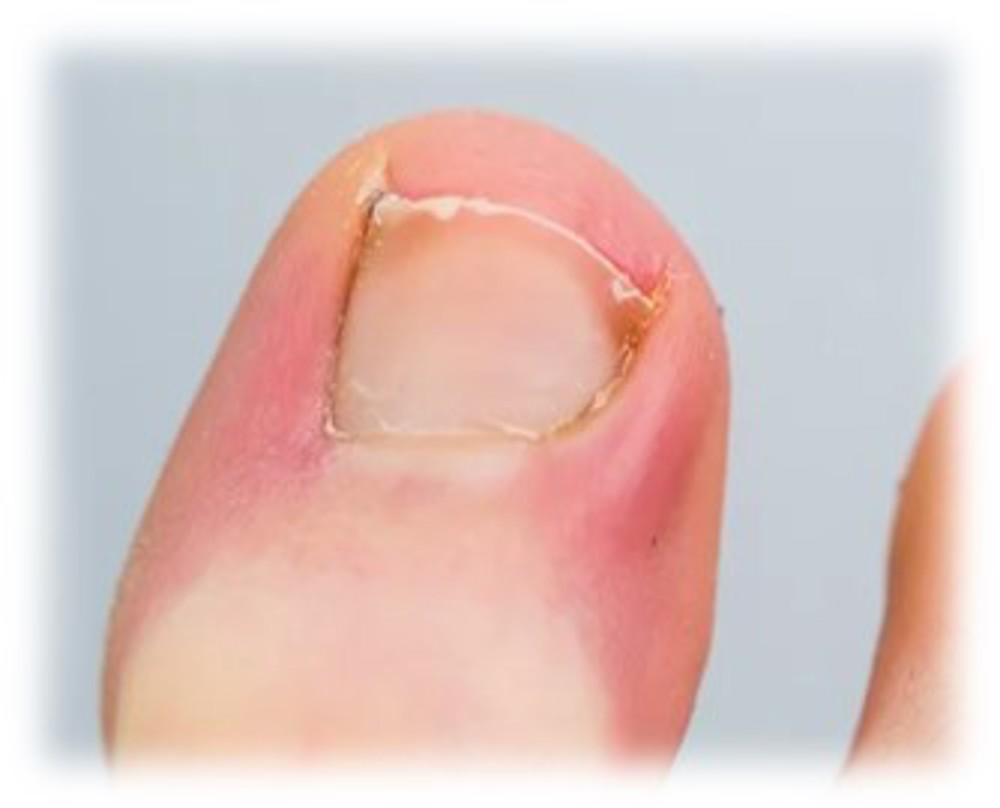What is an ingrown toenail?
An ingrown toenail is a common problem where the nail grows into and pierces the side of the toe. It can be painful, but there are things you can do to ease the pain.
Check if you have an ingrown toenail
You usually get an ingrown toenail on your big toe. But you can get them on any toe.
Your toe may become red, painful and swollen


What are the symptoms of an ingrown toenail?
An ingrown toenail often affects the big toe, either on one or both sides. The nail curls and pierces the skin which becomes red, swollen and tender.
- pain if pressure is placed on the toe
- a build-up of fluid (oedema) in the area surrounding the toe
- inflammation of the skin at the end of the toe
- an overgrowth of skin around the affected toe (hypertrophy)
- bleeding
- white or yellow pus coming from the affected area
What causes an ingrown toenail?
A few things can cause an ingrown toenail to develop, including:
- poor nail cutting technique – cutting your toenails too short, or cutting the edges, will encourage the skin to fold over your nail and the nail to grow into the skin
- wearing tight-fitting shoes, socks or tights – this places pressure on the skin around your toenail and the skin may be pierced if it’s pressed on to your toenail
- sweaty feet – if the skin around your toenails is soft, it’s easier for your nail to pierce it and embed itself within it
- injury – for example, stubbing your toe, or injury from sport
- natural shape of the nail – if the sides of curved they are more likely to press into the skin surrounding the nail
Do
use nail clippers and cut your toenails straight across, not at an angle or down the edge
wear shoes that fit and have space round the toes
soak your foot in warm, salty water to help soften the skin around your toe and reduce the chances of infection
Don't
cut your nails too short, or stick objects down the sides
pick or tear your nails
wear tight shoes that are narrow at the toe area
When to refer to podiatry?
- If you have an infection or your GP has prescribed antibiotics for an infection
- Have tried to self-treat with no improvement
- Have and underlying medical condition e.g. diabetes.
What are the treatment options for ingrown toenails?
One off treatment to remove the spike may resolve your ingrown toenail. Nail surgery may be recommended depending on the severity of your symptoms, which may be the whole nail or a part of the nail.
Surgery for ingrown toenail - Why would I need this procedure?
The most common reason for toenail surgery is if a toenail has ingrown i.e., the toenail has caused a break in the skin of the toe leading to pain and possible infection. Sometimes the toenail might not have broken the skin, but it can still cause pain because it is thickened or curled at the edges.
Surgery may be recommended if your toenail doesn’t improve. Depending on the severity of your symptoms, this may involve removing part or your entire toenail.
Partial nail avulsion (removal)
Partial nail avulsion removes part of your toenail and is the most common operation for treating ingrown toenails. It’s about 98% effective.
Using a local anaesthetic which numbs your toe, the edges of your toenail are then cut away. A chemical called phenol is applied to the affected area to prevent the nail growing back and becoming ingrown in the future. A course of antibiotics may be prescribed if your nail is infected, and any pus will be drained away.
Total nail avulsion (removal of the whole nail)
Total nail avulsion completely removes your toenail. This may be necessary if your nail is thick and pressing into the skin surrounding your toe. After your toenail has been removed, you’ll have an indentation where your nail used to be. However, it’s perfectly safe for you not to have a toenail.
After surgery
After toenail surgery, your toe will be wrapped in a sterile dressing. This will help stem any bleeding and prevent infection. To help reduce the pain, you may need to take a painkiller like paracetamol. You may also need to wear soft or open-toed shoes for the first few days after surgery.
Who can I call for advice?
Call our podiatry advice line on 01383 518 635
For further information please see the following links:
Ingrown toenail - NHS (www.nhs.uk)
Ingrown Toenails (Ingrowing Toenails): Causes and Treatment (patient.info)
Accessible formats
If you require this information in a community language or alternative format such as Braille, audio, large print, BSL, or Easy Read, please contact the Equality and Human Rights Team at: email: fife.EqualityandHumanRights@nhs.scot or phone 01592 729130. For people with a hearing or verbal impairment you can also contact the team through the NHS Fife SMS text service number on 07805800005.
